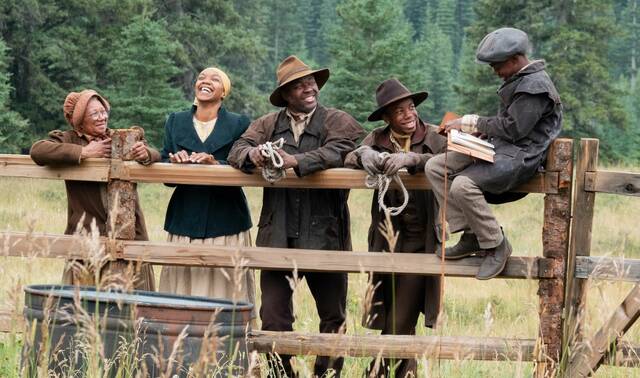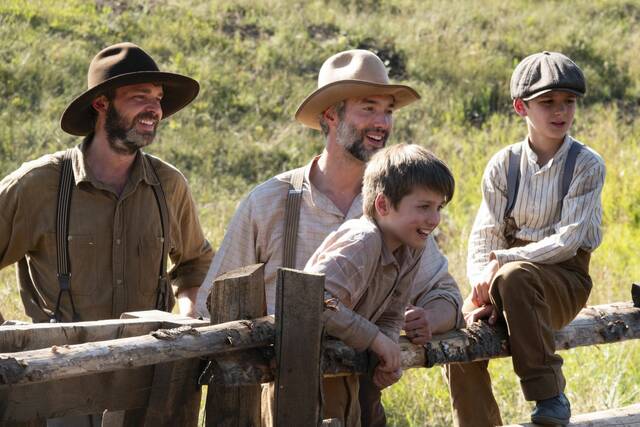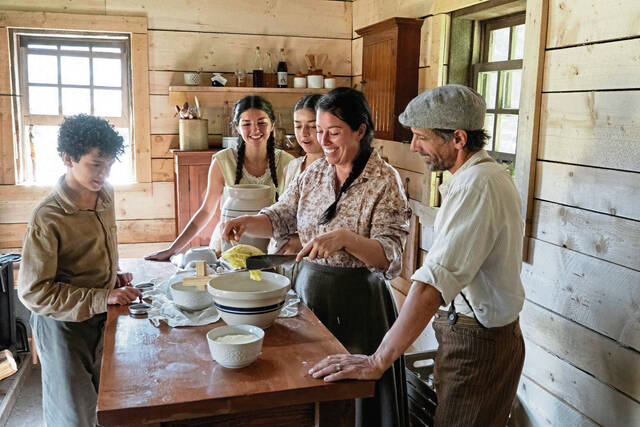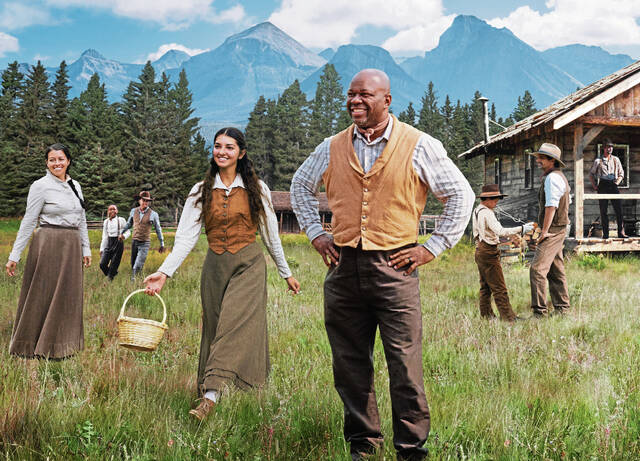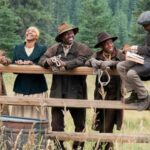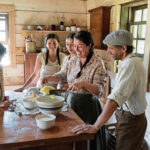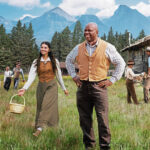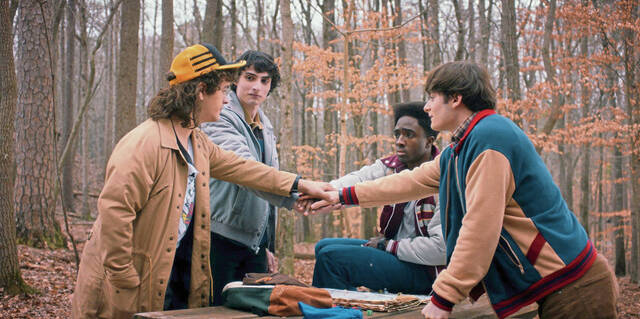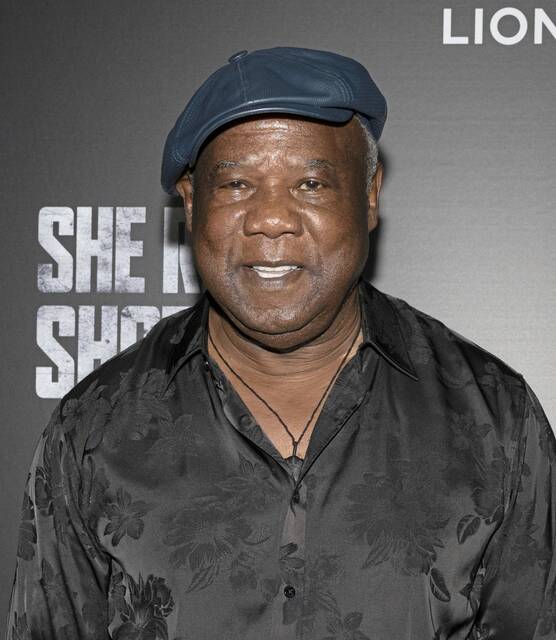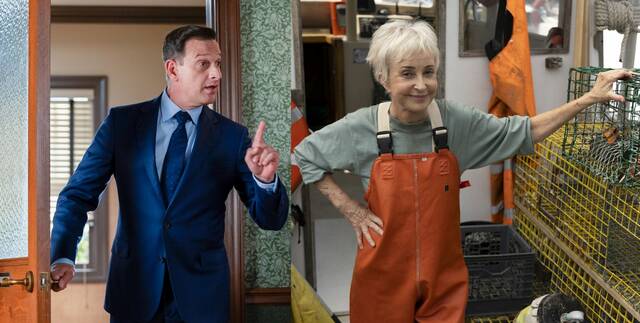Trib Total Media TV writer Rob Owen offers a viewing tip for the coming week.
It’s been more than two decades since the advent of PBS’s living history series that began with 1999’s “The 1900 House” and 2002’s “Frontier House.” These quasi-social experiment series took a diverse array of everyday people and filmed them living in period settings.
Now cable’s Magnolia Network, home to programs from Chip and Joanna Gaines, tries it again with “Back to the Frontier” (8 p.m. July 10), an eight-episode series that sent three families to live like it’s the late 1800s last summer on 10,000 acres in the shadow of the Canadian Rockies. New episodes debut each Thursday, streaming on HBO Max and airing on cable. (Magnolia Network can be found on Comcast’s Channels 121/1493, Verizon Fios TV’s Channels 167/667, DirecTV’s Channel 230 and Dish Network’s Channel 111.)
Allison Page, Magnolia’s global president, acknowledged “Back to the Frontier” is a big swing for a network better known for home, design and food shows, but she said at root it hews to the same on-brand theme.
“At its core, this show is about family, and if there’s one word to describe what I think Chip and Jo are about, it’s family,” Page said in a phone interview last month. “So it is both a departure, but it felt so natural and like such a good bet.”
Although the show’s concept is almost identical to what PBS did — “Back to the Frontier” comes from the same production company that made “Frontier Hours,” Wall to Wall — many things in society have changed over the intervening decades with the rise of smartphones, smart TVs and social media. Technology clearly plays a larger role in Americans’ lives than ever before. Two-dad and two-mom households are more common now, too.
“The idea of going back to the 1880s’ lifestyle today has such a different meaning than it ever has at any other point in our history,” Page said. “Leaving the modern world behind in 2000 is a lot different than leaving the modern world behind in 2025 or 2024 in terms of technology and our phones and what it means to connect with your family when what your family is used to is the world we live in today with all the things that disconnect us, even when we’re sitting right next to each other.”
“Back to the Frontier” leans into these shifts even as it focuses on three families who, judging by their homes, appear to be upper-middle class, Magnolia’s target audience.
The Lopers are a Black family with two kids from Alabama. The Hanna-Riggs are a two-dad family from Texas with twin 10-year-olds. The Halls, who have three children, are from Florida.
Some of the initial reactions to life on the frontier are surprising. Did a grown adult in 2024 really expect there would be hot showers? Or toilet paper in an 1880s outhouse? (The Hall children’s complaints about the lack of a dishwasher and refrigerator are more understandable because they’re kids.)
Deeper into the series, these families’ concerns become more understandable, current and relatable.
The Hanna-Riggs dads fret about how their sons will adapt to life without screens — which they use at home as both carrot (to get more screen time) and consequence (loss of screen time) — and the novelty of chores.
“They’ve never even used a mop,” says Jason Hanna.
“We’ve got a robot for that,” says tech-enamored Joe Riggs.
Stacey Loper struggles when she sees her children go without necessities, like food they enjoy.
“I grew up in poverty, and I always told myself I would not raise my family in poverty — and this experience is too close to that for me,” she says through tears in the first episode. “What have I brought my family into?”
As is the case with any TV series that bills itself as a social experiment, there are also conflicts. Jereme Hall rejects help from the other families, who take that as a snub, leading the Loper parents to bid up the price of livestock at an auction in childish spite, which leaves 18-year-old Mia Hall as the voice of reason.
“I think my dad was antagonizing, and that’s why they kept going, (bidding up the price),” Mia says. “It was hard to watch when we are supposed to be a community.”
The success of PBS’s “1900 House” and “Frontier House” resulted in several follow-up series, domestic (“Colonial House,” “Texas Ranch House”) and imported (“1940s House,” “Manor House” and “Regency House Party”). Page is already thinking about future living history shows if “Back to the Frontier” is a hit.
“Some of the conversations we’ve had in planning for if this is successful, what’s the value of trying to do something similar again, versus what about the Gold Rush? What about 1920?” Page said. “Even going back to a world that felt like the ‘20s or ‘30s would feel really challenging to any of us in the present day, so I think anything’s on the table.”



